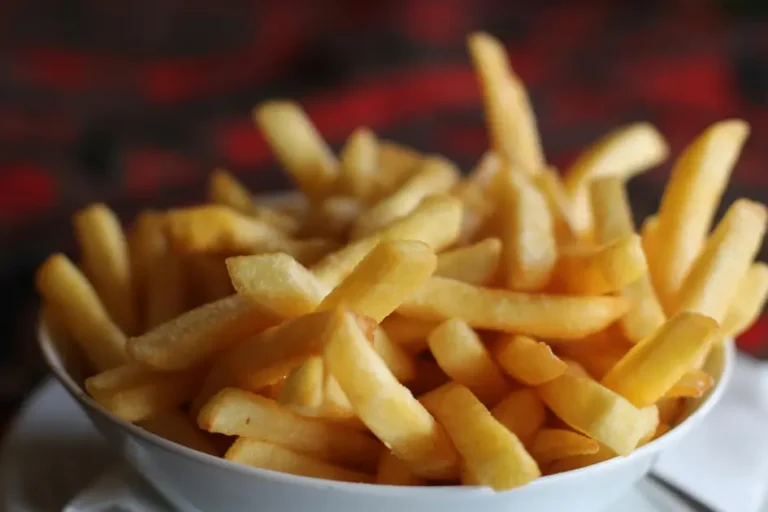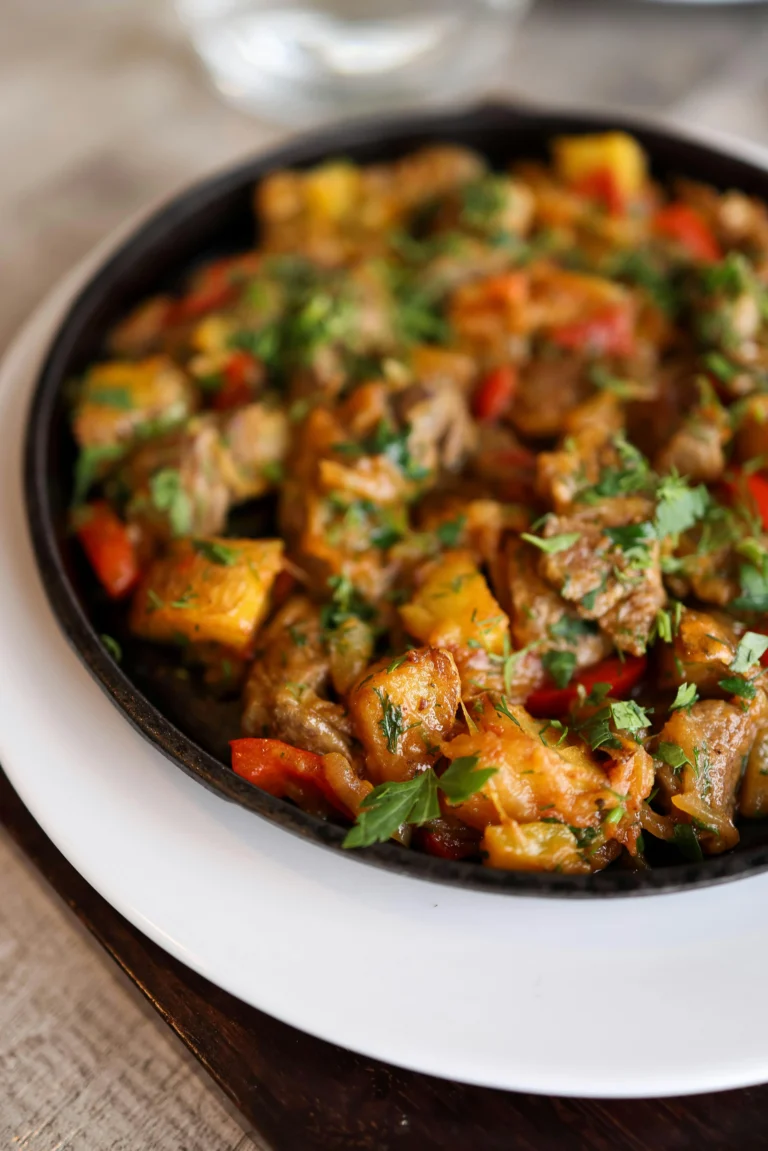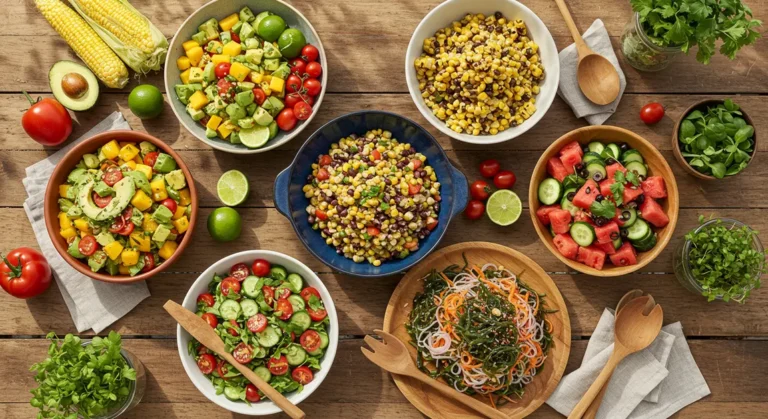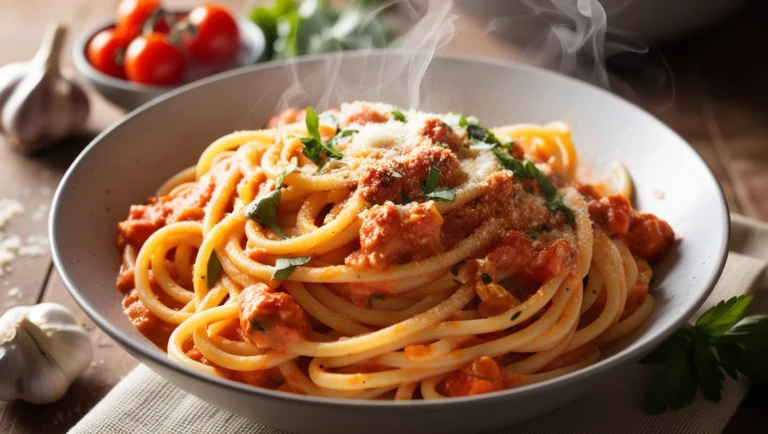The Best Italian Pasta Recipe for a Classic Family Dinner
Discover the secrets of traditional Italian pasta recipe making with our comprehensive guide to creating authentic homemade pasta dough, mastering regional pasta shapes, and pairing them with classic Italian sauces for a truly exceptional dining experience.

Table of Contents
Introduction: The Heart of Italian Cuisine
In the tapestry of Italian cuisine, pasta stands as its most celebrated thread—a culinary cornerstone that has conquered tables worldwide while maintaining deep roots in Italy’s regional traditions. What makes Italian pasta recipe truly special isn’t just its ubiquity but the reverence with which it’s prepared, from the careful kneading of dough to the final garnish that completes a dish. This guide will take you through the essential elements of authentic Italian pasta recipe making, focusing on homemade pasta dough techniques, understanding pasta shapes, and creating traditional Italian pasta sauces that honor generations of culinary wisdom.
The Art of Homemade Italian Pasta Recipe Dough: Back to Basics
There’s something profoundly satisfying about creating pasta from scratch—watching simple ingredients transform under your hands into something extraordinary. Traditional Italian pasta recipe dough requires just flour, eggs, salt, and occasionally olive oil or water, yet achieving the perfect consistency demands both technique and intuition.
Essential Ingredients for Authentic Pasta Dough
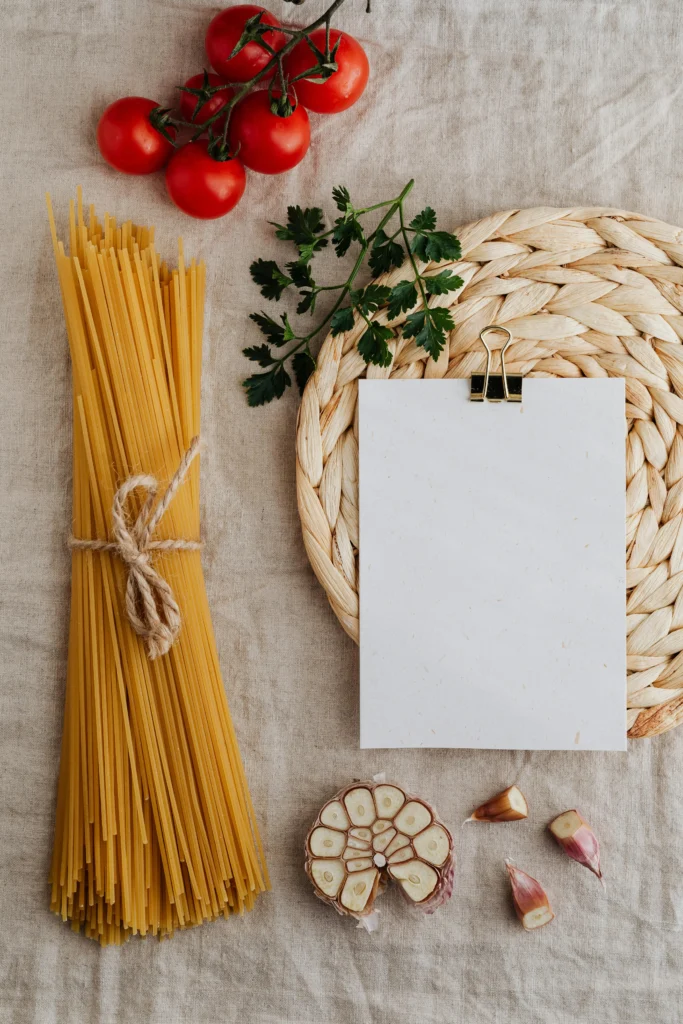
- Flour: For traditional egg pasta, Italians typically use “00” flour (doppio zero), prized for its fine texture. In southern regions, semolina flour often takes precedence, especially for water-based pasta.
- Eggs: Fresh, room-temperature eggs provide both moisture and richness to northern Italian pasta varieties.
- Salt: Just a pinch enhances flavor without overwhelming.
- Olive Oil: A small amount can add elasticity to certain doughs, though purists in many regions omit it entirely.
- Water: The foundation of southern Italian pasta traditions, where egg-free dough is more common.
The Traditional Kneading Method
- Create a flour well: Pour flour onto a clean surface, forming a volcano-like mound with a crater in the center.
- Add wet ingredients: Break eggs into the center (or pour water for egg-free pasta).
- Incorporate gradually: Using a fork, slowly incorporate flour from the inner walls into the liquid center.
- Knead with purpose: Once roughly combined, use your hands to knead the dough for 8-10 minutes until smooth and elastic.
- Rest the dough: Wrap in plastic and allow to rest for at least 30 minutes—this crucial step allows the gluten to relax and the moisture to distribute evenly.
“La pasta fatta in casa non ha paragoni.” (Homemade pasta has no comparison.) — Italian culinary proverb
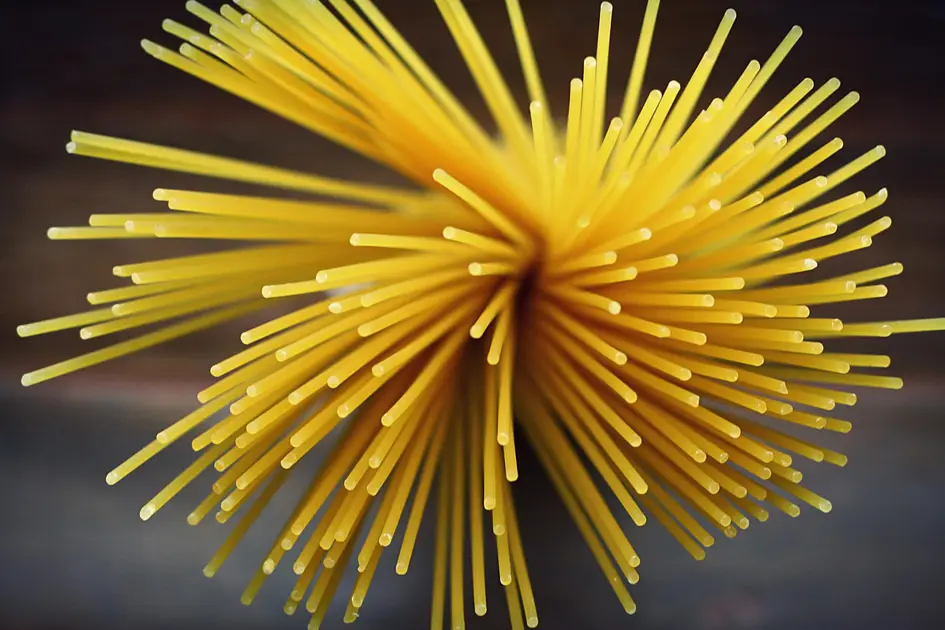
Testing for Perfection
Well-kneaded pasta dough should feel smooth and satiny to the touch, neither sticky nor crumbly. When pressed with a finger, it should slowly spring back—a sign of well-developed gluten structure that will give your pasta the ideal “al dente” bite when cooked.
Understanding Pasta Shapes: Form Follows Function
Italy boasts over 350 documented pasta shapes, each evolved to serve specific culinary purposes. Understanding the relationship between shape and sauce is fundamental to Italian pasta philosophy.
Regional Pasta Shapes and Their Origins
Northern Italian regions like Emilia-Romagna celebrate filled pastas such as tortellini and ravioli, while central Italy’s Tuscany and Umbria favor robust pappardelle and thick tagliatelle. Southern regions like Sicily and Puglia embrace shapes designed to capture chunky vegetable sauces, including orecchiette (“little ears”) and busiate.
The Shape-Sauce Harmony
The marriage of pasta shape and sauce isn’t arbitrary but reflects centuries of culinary evolution:
- Long, thin pastas (spaghetti, linguine, vermicelli): Ideal for light, oil-based or thin tomato sauces that coat each strand evenly.
- Ribbon pastas (tagliatelle, fettuccine, pappardelle): Perfect for capturing rich, creamy sauces or hearty meat ragùs.
- Tubular pastas (penne, rigatoni, ziti): Designed for chunkier sauces that can enter the hollows and cling to ridged exteriors.
- Cup-shaped pastas (orecchiette, conchiglie): Created to cradle small vegetables and legumes within their curves and hollows.
- Filled pastas (ravioli, tortellini): Vessels for cheese, meat, or vegetable fillings, typically served with butter-based or light cream sauces that complement rather than overwhelm.
Traditional Italian Pasta Sauces: Regional Treasures
Italian pasta sauces reflect the country’s geographic diversity, from the butter-rich north to the olive oil-centered south. Each region has perfected sauce recipes that showcase local ingredients and complement traditional pasta shapes.
Northern Italian Classics
- Ragù alla Bolognese: This world-famous meat sauce from Bologna simmers for hours, combining beef, pork, wine, tomato, and aromatic vegetables into a deeply flavored sauce traditionally served with tagliatelle.
- Pesto alla Genovese: From Liguria comes this uncooked sauce of crushed basil, pine nuts, garlic, Parmigiano-Reggiano, Pecorino, and olive oil—perfect with trofie or linguine.
Central Italian Favorites
- Amatriciana: Native to the town of Amatrice in Lazio, this sauce combines guanciale (cured pork jowl), pecorino cheese, tomatoes, and sometimes a touch of peperoncino (chili pepper), traditionally paired with bucatini.
- Cacio e Pepe: The essence of Roman simplicity—just black pepper, Pecorino Romano cheese, and pasta cooking water creating a creamy emulsion that clings to tonnarelli or spaghetti.
Southern Italian Staples
- Ragù Napoletano: Unlike its northern counterpart, this Neapolitan sauce features large pieces of meat slow-cooked in a tomato base until meltingly tender, typically served with ziti or other robust shapes.
- Pasta alla Norma: Sicily’s tribute to locally grown eggplants, combined with tomatoes, basil, and salted ricotta, traditionally paired with casarecce or rigatoni.
Bringing It All Together: The Perfect Pasta Dish
Creating an authentic Italian pasta recipe requires attention to several key elements that transform good pasta into an exceptional culinary experience.
The Cooking Method
- Use abundant water: Italians cook pasta in generously salted water—”as salty as the Mediterranean”—using approximately 4-5 quarts of water per pound of pasta.
- Never add oil to pasta water: This common misconception prevents sauce from properly adhering to the pasta.
- Cook until al dente: The hallmark of perfectly cooked pasta is a slight resistance when bitten—what Italians call “al dente” (to the tooth).
- Reserve cooking water: Before draining, save a cup of starchy pasta water to help bind sauce to pasta.
The Critical Finish
- Undercook slightly: Remove pasta from boiling water 1-2 minutes before package directions suggest.
- Finish cooking in the sauce: Transfer the pasta directly to the sauce, allowing it to absorb flavors while completing cooking.
- Add reserved cooking water: A splash of starchy water helps create a silky texture that binds sauce to pasta.
- Toss vigorously: Proper “mantecatura” (sauce integration) requires energetic tossing to create an emulsified coating on each piece of pasta.
Final Touches
- Use restraint with cheese: Quality Italian cheeses like Parmigiano-Reggiano or Pecorino Romano should complement, not overwhelm. Some seafood pastas traditionally omit cheese entirely.
- Fresh herbs: Add delicate herbs like basil at the very end to preserve their aromatic qualities.
- Quality olive oil: A final drizzle of extra virgin olive oil can add a luxurious finish to many pasta dishes.
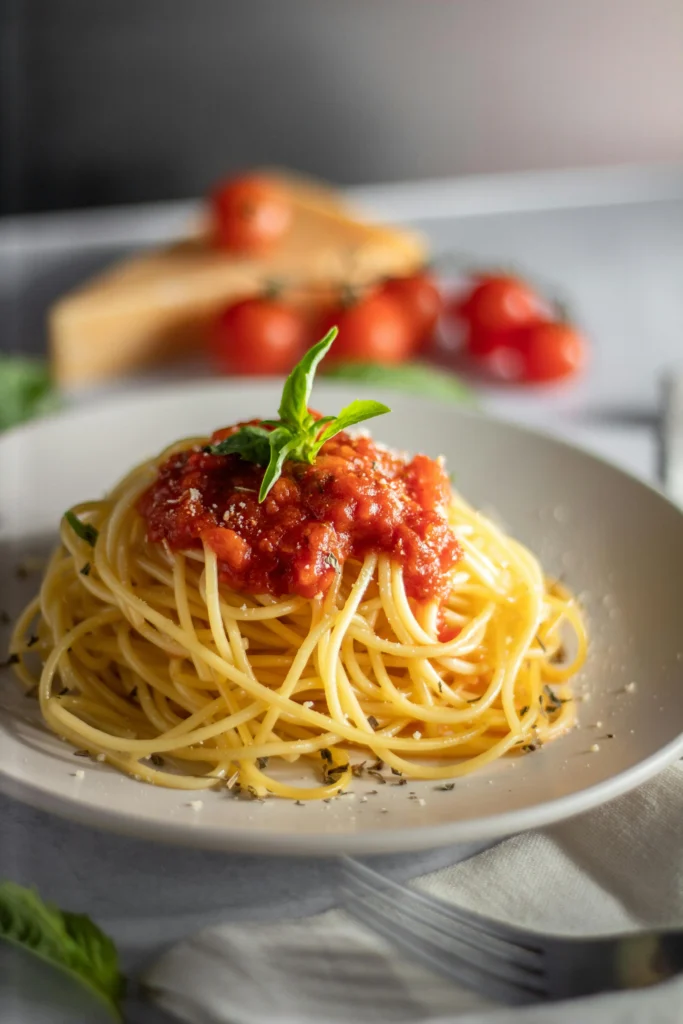
Preserving Tradition in Modern Kitchens
While pasta-making technology has evolved, the principles governing great Italian pasta recipe remain unchanged. Whether using a hand-cranked pasta machine, an electric model, or shaping pasta by hand, the fundamentals of dough preparation, cooking technique, and sauce pairing continue to honor centuries-old traditions.
For the home cook seeking authenticity, investing time in understanding these culinary foundations yields dividends in the form of pasta dishes that transcend the ordinary—connecting your table to the rich tapestry of Italian gastronomic heritage.
Conclusion: The Ongoing Pasta Journey
The world of Italian pasta recipe offers endless exploration—each shape, sauce, and regional variation tells a story of cultural history, agricultural bounty, and culinary ingenuity. By mastering the fundamentals of homemade pasta dough, understanding the purpose behind pasta shapes, and learning traditional sauce preparations, you embark on a rewarding culinary journey that connects you to generations of Italian wisdom.
Remember that authentic Italian pasta recipe making celebrates simplicity, quality ingredients, and time-honored techniques. Whether you’re rolling out your first sheet of fresh pasta or perfecting your hundredth batch, approach the process with patience and respect for tradition, and your efforts will be rewarded with truly exceptional pasta dishes.
Frequently Asked Questions (FAQ)
Why is my homemade pasta dough too dry or crumbly?
Pasta dough consistency can vary based on flour type, egg size, and even humidity. If your dough feels too dry, add a small amount of water (about a teaspoon at a time) by moistening your hands and continuing to knead. Conversely, if the dough is sticky, incorporate small amounts of flour during kneading.
Can I make pasta dough in advance?
Yes! Freshly made pasta dough should rest for at least 30 minutes before rolling, but you can refrigerate it (tightly wrapped) for up to 24 hours. Bring it back to room temperature before rolling. For longer storage, you can freeze the dough for up to a month.
What’s the best way to dry homemade pasta?
Fresh pasta can be dried on floured baking sheets, clean kitchen towels, or pasta drying racks if you plan to cook it later. For short pasta shapes, ensure they’re spread in a single layer. Long pasta shapes can be hung on a pasta rack or even a clean clothes hanger. Dry until the pasta feels leathery but still flexible—typically 30 minutes to 4 hours depending on humidity and thickness.
How do I prevent fresh pasta from sticking together?
Ensure cut pasta is well-floured and spread in a single layer. For long shapes like fettuccine, create nests by gently twirling portions on a floured surface. If storing short-term before cooking, a light dusting of semolina flour helps prevent sticking.
Is egg necessary for authentic Italian pasta recipe?
Not always! Northern Italian regions favor egg-based pasta, while southern regions traditionally make water-based pasta (pasta bianca), particularly when working with semolina flour. Both styles are authentic, just representing different regional traditions.
Why does restaurant pasta taste better than homemade?
Restaurant pasta often benefits from three key factors: proper salting of pasta water, finishing pasta in the sauce rather than simply topping it, and the addition of pasta cooking water to create a silky emulsion that coats each piece perfectly.
What’s the difference between fresh and dried pasta in Italian cooking?
Contrary to common belief, dried pasta isn’t inferior to fresh—it’s simply different. Many classic Italian dishes specifically call for dried pasta due to its texture and cooking properties. Fresh pasta cooks quickly and has a tender bite, while dried pasta maintains more structure and develops a desirable al dente texture.


